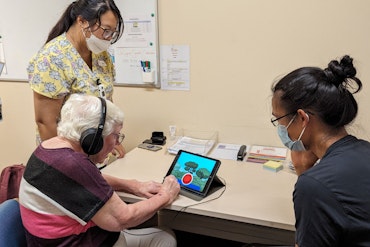How did aged care fare in 2022?
Within a decade, there will be more people aged over 65 years than under 18 living in Australia for the first time in history. So, what do we know about the financial stability of aged care in Aus?
![<p>The Financial report on the Australian Aged Care Sector revealed there had been continued fiscal stress for residential providers in the past financial year, 2021 – ‘22 — in-line with that of the 2020 – ‘21 period. [Source: Shutterstock]</p>](https://agedcareguide-assets.imgix.net/news/articles/wp/financialreport2122old.jpg?fm=pjpg&format=auto&w=550&q=65)
The Financial report on the Australian Aged Care Sector revealed there had been continued fiscal stress for residential providers in the past financial year, 2021 – ‘22 — in-line with that of the 2020 – ‘21 period. [Source: Shutterstock]
Key points:
- The Department of Health and Aged Care released the latest Financial Report on the Australian Aged Care Sector 2021 – 2022, which offered providers insight into performance across the industry
- The residential care sector operated at a loss of $2.264 billion dollars in total — an average net loss per resident per day of $32.97
- The home care sector remains profitable, however there was a decrease in profitability for the 2021 – ‘22 financial year compared to the 2020 – ‘21 FY
The newly released Financial Report on the Australian Aged Care Sector 2021 – ‘22 revealed that the industry had likely reached the lowest financial performance in the latest financial year, following a steady decline which began in 2016 – ‘17.
The Report highlighted that better results are expected across the industry in future years following key reforms which will come into effect following the ‘21 – ‘22 FY, such as:
Key reforms
- An additional 9,500 home care places in 2023 – ‘24
- The roll out of the Australian National Aged Care Classification — AN-ACC — funding model, which started on October 1, 2022
- The expanded role of the Independent Health and Aged Care Pricing Authority which will provide advice to the Government to ensure care funding moves in-line with the costs of delivering care — IHACPA’s first recommendation to the Government was delivered in May, 2023 and AN-ACC funding increased by 17 percent
- Funding for higher wages for aged care workers
- Additional Australian Government investment into care and nursing, which is intended to restore confidence in the quality of residential aged care
The home care sector changed from the 2020 – ‘21 FY to the ‘21 – ‘22 financial year, through:
Home care sector — 2021 – ‘22
- A 22.51 percent increase in home care recipients, as of June 30, 2022
- 23 fewer home care providers
- An increase of 4.76 percent in Australian Government funding
- A 31.25 percent decrease in average earnings before interest, tax, depreciation and amortisation — EBITDA/profitability, per resident
- A 35.31 percent decrease in net profit before tax — NPBT
The residential aged care sector, however, saw a relative:
Residential aged care sector — 2021 – ‘22
- 2.75 percent increase in Australian Government funding
- 101 percent decrease in EBITDA per resident
- Average operating loss of $32.97 per resident, per day
- 15 percent fewer profitable providers in the sector
As for the Commonwealth Home Support Programme in ‘21 – ‘22, there were:
Residential aged care sector — 2021 – ‘22
- 0.87 percent fewer CHSP recipients
- 1.75 percent fewer CHSP providers
- 5.45 percent more Australian Government funds directed towards the CHSP
The Report noted that the residential aged care sector had already improved as a result of the AN-ACC commencement in October, as highlighted in the second quarterly financial snapshot for 2022 – ‘23.
What do you believe the future of the aged care industry will look like? To review the Report in full, please visit the FRACCS data analysis here.























